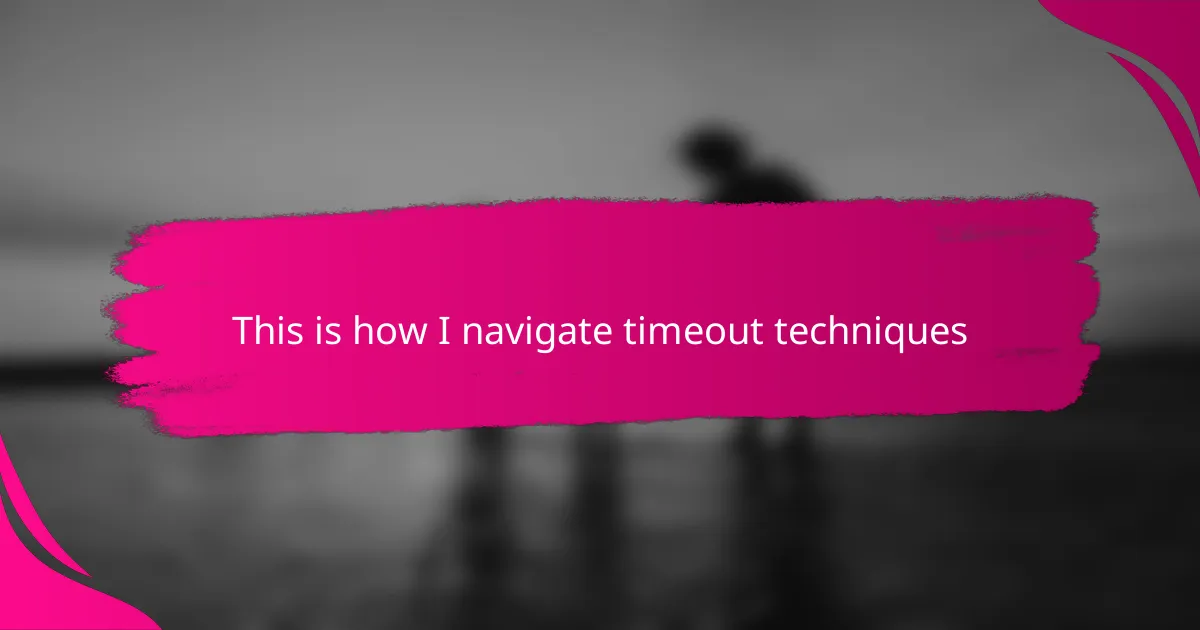Key takeaways
- Timeouts serve as a reset for both parents and children, allowing space for emotional regulation and reflection.
- Setting up a calming, distraction-free timeout space enhances the effectiveness of the technique.
- Effective communication during timeouts, such as using simple, supportive language, fosters a constructive experience.
- Reflecting on the outcomes of timeouts helps improve future approaches and strengthens the parent-child relationship.
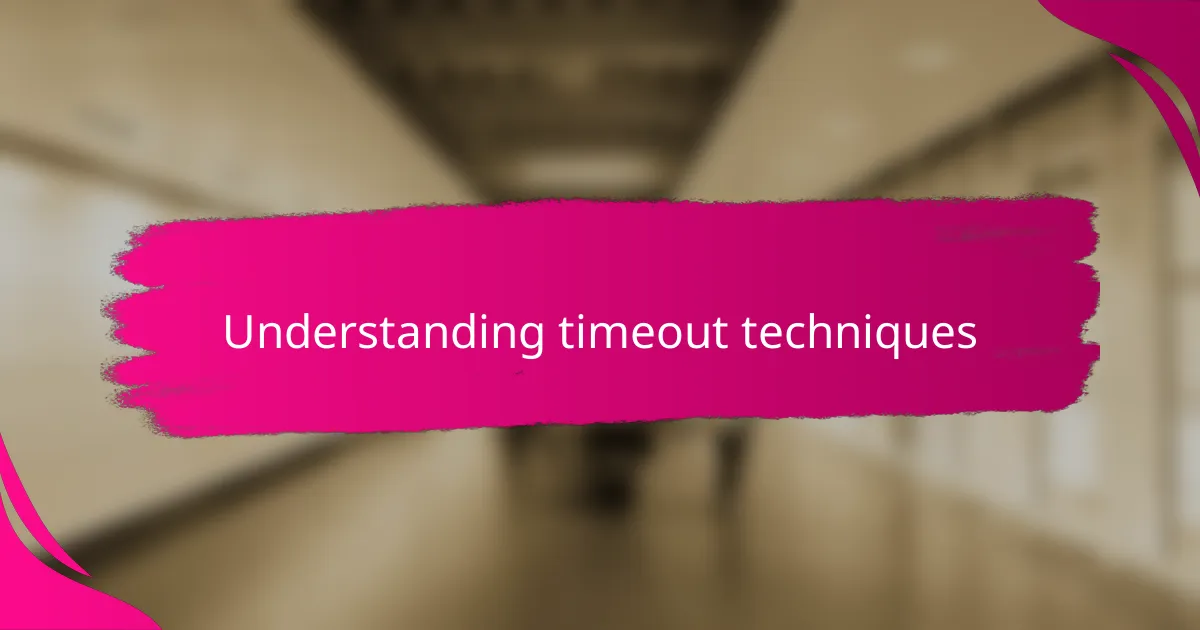
Understanding timeout techniques
Timeout techniques often get misunderstood as mere punishments, but from my experience, they’re really about giving both parent and child a moment to reset. Have you ever noticed how a brief pause can stop a tantrum from spiraling into something worse? That small break can work wonders in calming emotions before they escalate.
What I’ve realized is that a timeout isn’t just about isolation—it’s about teaching children to recognize their feelings and regain control. When my child was little, those quiet moments helped us both breathe and approach the situation with more patience. It’s less about enforcing silence and more about encouraging reflection.
Sometimes, I wonder if we as parents overlook the real purpose behind timeouts. Are we using them to vent our frustration, or are we truly helping our child develop self-regulation? Understanding this difference has shaped how I approach timeouts and made those moments far more effective and meaningful.
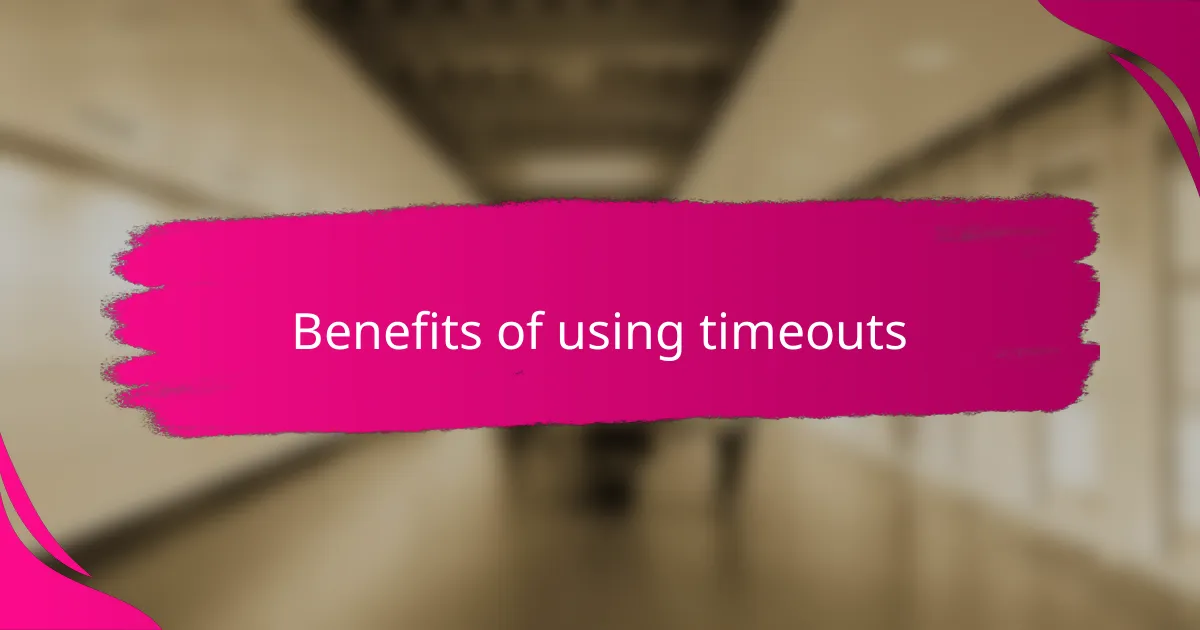
Benefits of using timeouts
One benefit I’ve found is that timeouts help my child—and me—step away before emotions run too high. It’s like pressing a reset button that prevents the situation from getting worse, which honestly saves a lot of stress for both of us. Have you ever tried to reason with a child in full meltdown mode? It’s nearly impossible, and timeouts give that breathing space to restore calm.
Another great upside is that timeouts teach my child about boundaries and self-control. Instead of just feeling punished, my child learns there’s a moment to pause, think, and come back ready for better choices. I remember one afternoon when my child took a longer timeout than usual and then actually apologized afterward—that was a powerful moment showing real growth.
I also appreciate how timeouts create an opportunity for reflection—not just for children but for me as a parent. Sometimes I catch myself getting frustrated, and those moments remind me to check my own patience. Isn’t it valuable when discipline techniques help us grow, too? This mutual learning makes the whole process feel less like a chore and more like teamwork.
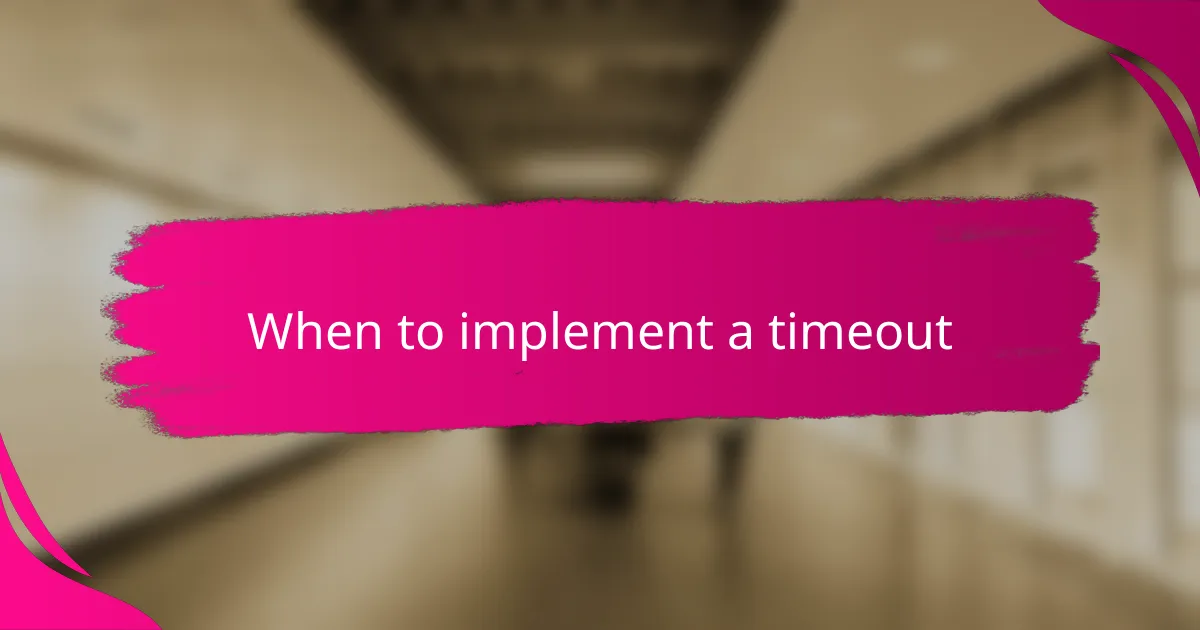
When to implement a timeout
Knowing the right moment to use a timeout has been a learning curve for me. I’ve found that the best times are when emotions start to boil over but before things get completely out of hand. Have you ever tried to speak calmly to a child who’s already screaming? It rarely works, which is why stepping in early feels crucial.
I remember one evening when my child was about to explode over a toy dispute, and instead of waiting for the meltdown to peak, I suggested a timeout right away. That small intervention gave us both a chance to breathe, and the intensity of the moment just melted away. It’s in those early moments that a timeout can make all the difference.
Of course, there are times when a timeout isn’t the answer—like when my child is tired or hungry—and recognizing those nuances has helped me avoid using timeouts when they’d only add frustration. Timing, to me, is everything; implementing a timeout should come from a place of calm intention, not reaction.
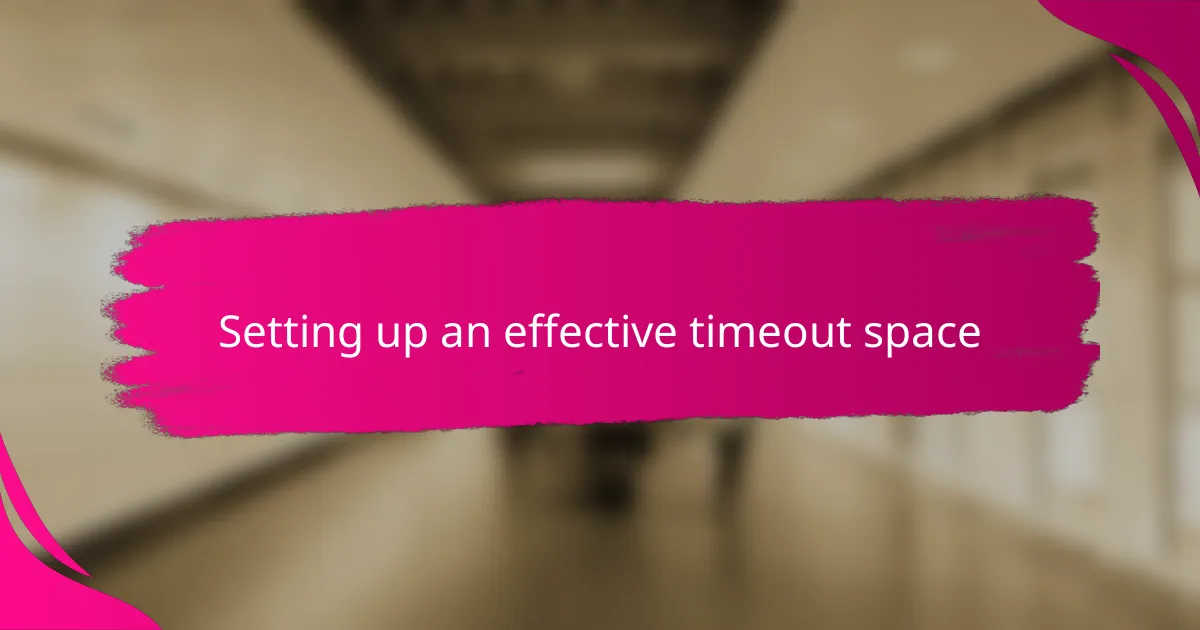
Setting up an effective timeout space
Creating a timeout space that truly works means finding a spot that feels calm but not isolating. I chose a cozy corner in our living room with a soft chair and a few calming books—not too far from the action, so my child doesn’t feel completely cut off. Have you noticed how the environment can either soothe or escalate a child’s emotions? Getting this right has made a huge difference in how our timeouts unfold.
It’s important that the timeout spot isn’t associated with punishment alone; instead, I’ve filled it with reminders that it’s a place for taking a breather. Sometimes I add a small sensory toy or a soft blanket to help my child settle down. When I introduced these little comforts, the resistance to timeout moments seemed to fade away, and it became a place my child could almost voluntarily choose to go.
One thing I learned the hard way: avoiding areas filled with distractions is key. Early on, I set up timeout near the TV, thinking it’d be handy, but it just tempted my child to get more worked up. A simple, distraction-free spot encouraged focus and reflection instead. What about your timeout space—do you think it supports calm, or does it distract? This detail really shapes how effective those moments can be.
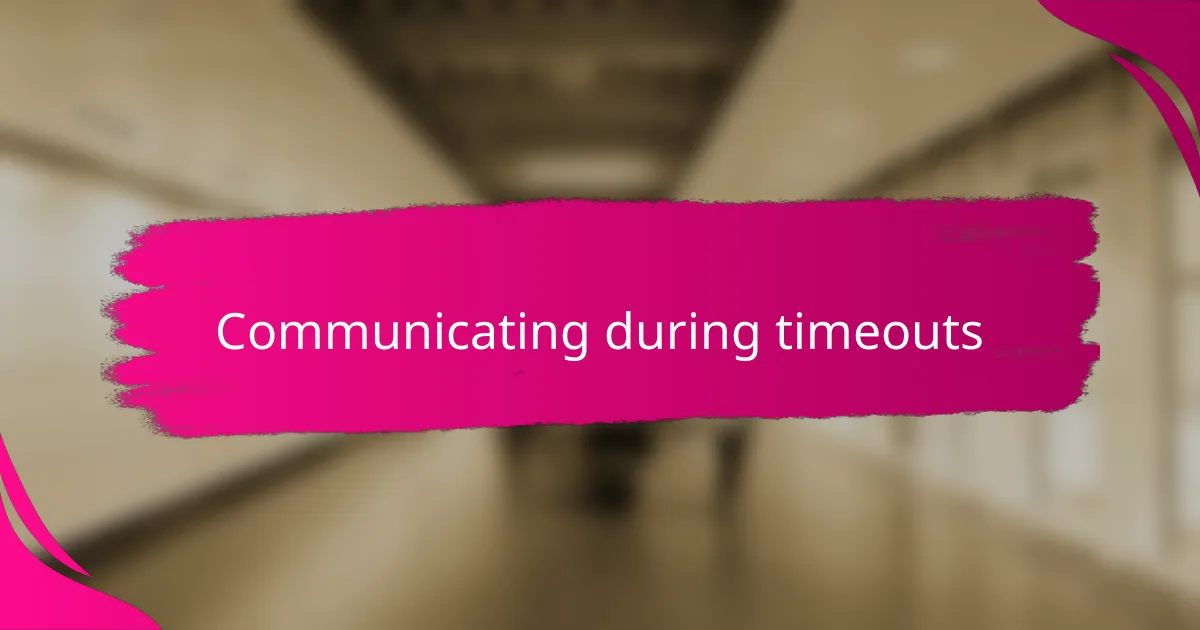
Communicating during timeouts
During timeouts, I’ve found that how we communicate matters just as much as the timeout itself. Instead of launching into lectures, I keep my tone calm and simple, sometimes just saying, “Let’s use this time to breathe and think.” Have you noticed how a gentle voice can help soften resistance and open the door for reflection?
I also try to avoid overwhelming my child with too many words during the timeout. It’s tempting to explain everything at once, but I’ve learned that short, clear messages work best. For instance, a quiet reminder like, “When you’re ready to talk, I’m here,” lets my child feel supported without pressure.
Sometimes, when the timeout ends, I make it a point to reconnect warmly. I might say something like, “I know that was hard, but I’m proud of you for taking a break.” This small gesture helps turn the timeout from a punishment into a moment of growth and connection. Isn’t it amazing how a few thoughtful words can shift the whole experience?

Common challenges and solutions
One challenge I often face is my child resisting the timeout, thinking it’s a punishment rather than a pause. I found that explaining the purpose beforehand and making the timeout space inviting helps ease that resistance—it turns a moment of defiance into an opportunity for calm. Have you noticed how framing timeouts positively can change your child’s attitude?
Another struggle can be my own impatience creeping in, especially during repeated timeouts in a short span. I remind myself that staying calm models the behavior I want to see, and sometimes taking a deep breath before enforcing the timeout makes all the difference. It’s not easy, but I’ve realized patience is key to making timeouts effective rather than escalating stress.
Sometimes the timing just doesn’t feel right—like when my child is hungry or overtired—and using a timeout then only makes things worse. I’ve learned to watch for those signals and adjust my approach, sometimes opting for comfort or distraction instead. Have you found that flexibility in your approach helps prevent power struggles during these moments?
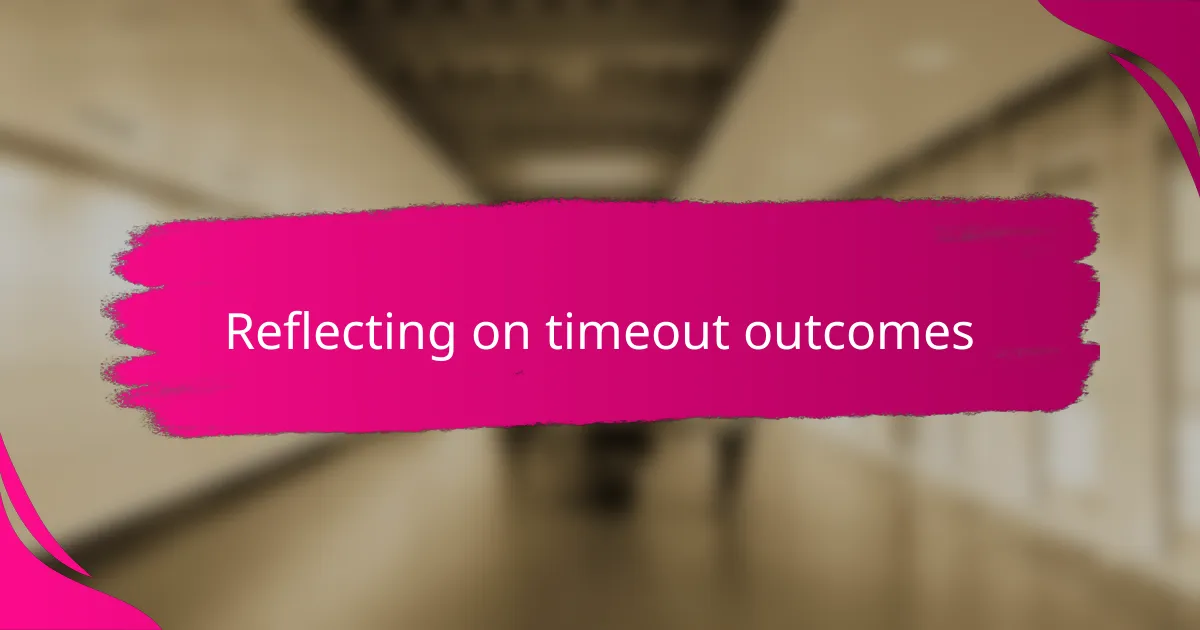
Reflecting on timeout outcomes
Reflecting on how timeouts actually play out afterward is something I’ve come to value deeply. Have you ever noticed that some timeouts end in real calm, while others just feel like ticking boxes? For me, the difference often lies in pausing afterward to think about what worked and what didn’t, not just moving on to the next thing.
Sometimes, I catch myself wondering if the timeout truly helped my child understand their feelings or if it simply stopped the behavior temporarily. After one particularly tough day, I took a moment to ask my child how they felt during the timeout—and their honest answers gave me insights I hadn’t expected. Those moments of reflection have shifted timeouts from feeling like rules to feeling like real conversations.
I’ve also realized that my own feelings about the timeout matter just as much. When I’m calm and open to learning from the experience, it creates a much more positive outcome for both of us. It’s like any partnership—the better we understand each other’s reactions, the stronger our connection grows, even through challenging moments. What reflections have you noticed after your timeouts?
